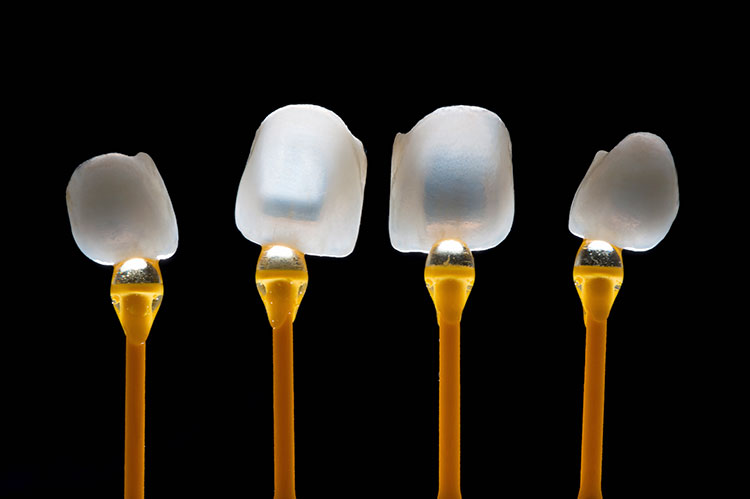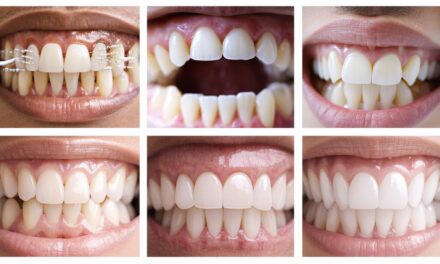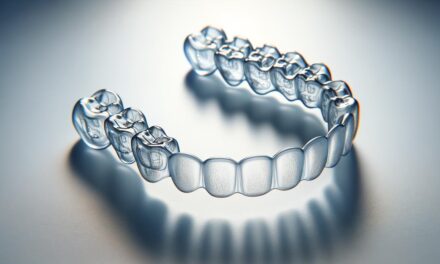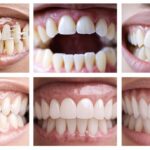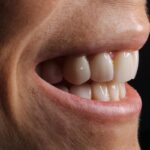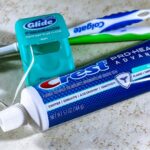Bite Correction with Veneers
When looking for a quick and relatively painless solution to a misaligned bite, veneers appear to be the good choice. They are mostly known for their usage in cosmetic dentistry and are able to turn stained teeth into a beautiful white smile without the need of multiple whitening treatments. While they aren’t traditionally associated with bite correction, it is becoming more common as a potential treatment for bite correction.
What Are Veneers?
By general definition, a veneer is a thin coating that is placed over an object for decorative purposes. When the term is applied to dentistry, the objects that are covered are teeth. Unlike a dental crown, the veneers only cover the front of the teeth. If installed correctly by the dentist, veneers are cosmetically pleasing.
Types of Veneers
Composite Veneers – Made of a resin material, composite veneers are typically only used on teeth where a mild chip or discoloration has occurred. The material is not initially solid and is very pliable, allowing it to be applied and then shaped around the tooth in the areas that needs correction. Although composite veneers are highly useful for making minor corrections, they are also labor extensive and the material used is not as durable as would be desired for handling the pressure of a full bite. Additionally, they’re not as pleasing to the eye so they’re not the best choice for covering teeth that will be visible when smiling.
Porcelain Veneers – By far, porcelain veneers are the more popular type of veneer in cosmetic dentistry. They deliver stunning results when the goal is to achieve a perfectly white smile. Rather than being manually shaped to the teeth, they are shaped in a lab by a specialist using a mold of your teeth and then installed onto each individual tooth as solid pieces. Getting the veneers applied is usually a two visit process. The first visit consists of grinding down the teeth that are going to have veneers on them. This takes away roughly 1mm to 1.5 mm off the front of the tooth. Then, a mold of your teeth will be made to be sent to a lab where the veneers will be constructed. A temporary covering is then placed over the teeth to protect them until the next visit and to give you a basic idea of what the finish veneers are going to look like. During the second visit, the application of the veneers is completed.
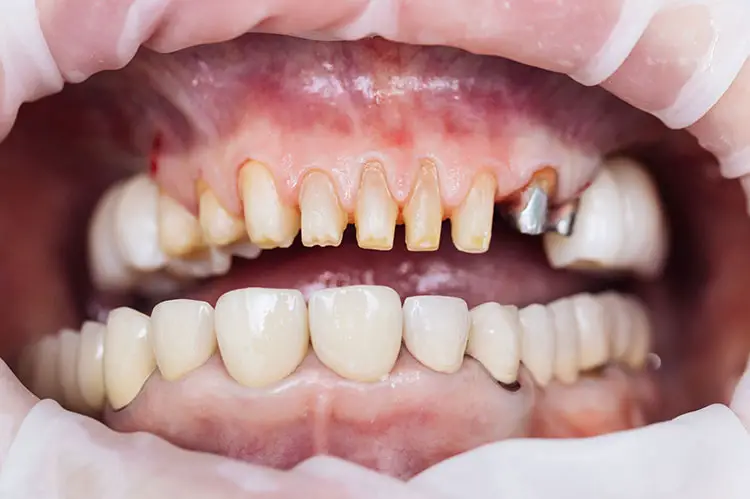
This starts with a technique called ‘etching’ that involves placing an acid gel onto the tooth to remove some more of the enamel and create a rough surface that will allow the bonding to hold the veneer on securely. A bonding agent and dental cement are brushed onto the tooth before the veneer is put in place and checked to make sure it is aligned correctly. The substances will react to each other and hardened when exposed to a curing light. The final step is to clean up around the veneers and remove the excess dental cement. In contrast to composite veneers, porcelain are durable and don’t chip easily. They can handle quite a bit of biting force and in some cases, can last up to 15 years if cared for properly. The downside of getting porcelain veneers is that, at up to $2,500 per tooth, they can tend to lean onto the pricier side of dentistry. Since they will have to be replaced as time goes on, the expensive price for these veneers will have to be paid more than once. Due to porcelain veneers being classified as cosmetic, most insurance companies will not cover much, if any, of the cost. Both types of veneers require a procedure that can not be reversed. In order to place the veneer on, the significant amount of the protective enamel layer has to be stripped from the tooth. Once enamel is gone, you can not get it back and will always need to have a material covering the tooth to avoid decay and extreme sensitivity. Due to this, the choice to get veneers is one that needs to be well thought out because it can be a pricey commitment and your teeth are taking on damage from the procedure.
VENLAY® Restorations
Recently, a type of veneer called VENLAY® has been introduced to the market. Designed by Dr. Muslin in Santa Monica, CA, VENLAY® appears to be a type of veneer-retrainer hybrid that was intended to be both a cosmetic remedy and a form of bite correction treatment. This treatment differs greatly from the other forms of veneers due to preserving the enamel. It’s far less invasive because there’s no grinding needed and it’s simply bonded to the surface of the teeth. According to patients that have used VENLAY® to correct their bite, the results are remarkably good for a non-surgical solution that doesn’t include braces. However, since the patent for VENLAY® wasn’t filed until 2013, this treatment is too new and has not been used enough to determine the true long-lasting results. More case studies and long term observation are needed to gauge how well this treatment holds up in the long run.
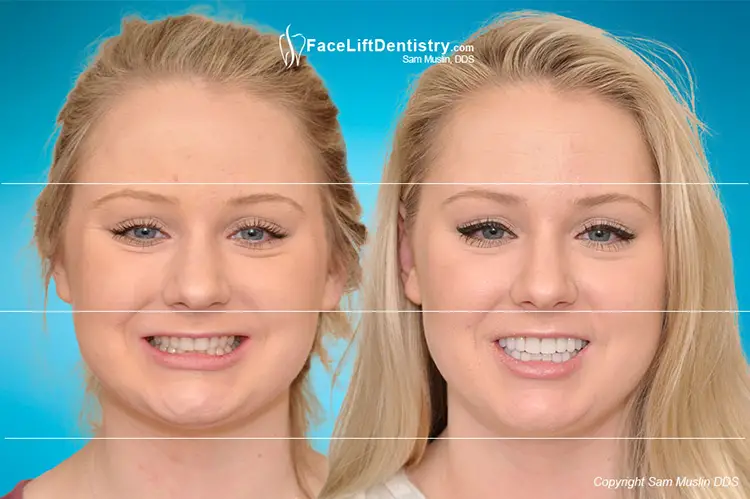
Considering that it’s not damaging to your teeth, VENLAY® may be the perfect option if you want a quick and painless solution to a misaligned bite but be warned: the procedure may not be painful but the price tag might cause some pain for your bank account. In an interview piece with Dr. Muslin conducted by ABC’s KSAT12, the price for VENLAY® was quoted as ranging from $35,000 plus the cost of flying to the location if you don’t live in California.
Is Getting Veneers Painless?
If you opt for the recommended no-grinding no-prep types of veneers, then the process is painless.
When your teeth has to be ground down then getting veneers it may be a painful process or at the very least uncomfortable. Some people have more sensitive teeth so the grinding may cause some pain in that case. If getting a dental cleaning has caused you pain in the past then getting veneers is likely to cause some discomfort as well. You can always request to be numbed up before the procedure if you’re worried about the chance of pain but in general, it’s not nearly as painful as some of the more routine dental procedures.
Will Veneers Correct Your Bite?
Maybe.
Veneers do not move the position of the teeth or the jaw. That’s the reason they are considered one of the least invasive forms of bite correction but it’s also the reason that the results very widely. If the bite issue stems from the jaw being too long or too short, severe crowding, or another skeletal cause, veneers won’t help much because they are mostly meant for cosmetic purposes. In adults, teeth are much more difficult to move because the bone is fully developed and hardened. It takes a lot of constant pressure and force to change their position and veneers do not provide that. For a mild openbite or gaps between teeth, veneers can give the appearance of longer or wider teeth so they can be useful for correcting the issue on a cosmetic level – they won’t actually change the way your teeth are or realign them but they’ll give you a nice looking smile. If your bite issue is not causing you any problems aside from being unhappy with the way they look, veneers are a decent solution that is much quicker than braces.
The option of veneers for malocclusion treatment is greatly dependent on the severity of the problem and there are some risks. Not only are teeth irreversibly damaged in the process of applying the veneers but if they aren’t fitted perfectly, they can also make a bite even more misaligned than it was to start with. Developing TMJ or worsening a preexisting case of it is a side effect that is associated with veneers. Multiple adjustments may need to be made in order for the veneers to feel comfortable and you’re going to want a great dentist that is experienced in applying them.
VENLAY® has good reviews from patients and is reported to go deeper than normal cosmetic dentistry. There are examples of multiple types of malocclusion being corrected by this treatment and the information available about it to date are quite promising. The main issue with this treatment form is that it is so new. Currently, there is no way to determine what kind of difference using the VENLAY® treatment is going to make in five or ten years or what possible side effects may occur over time. The good aspect about it is that it doesn’t damage your teeth so it’s not permanent and can likely be reversed if it is ineffective or worsens the bite alignment later on. As with any new treatment form, it could eventually prove to be absolutely stunning or completely lackluster. Only time and trial will tell. If you’re willing to pay the hefty price tag that comes with this treatment, it’s not a bad option to consider and appears to be a big step up from veneers and crowns when it comes to fixing a bad bite.
Key Points about Veneers:
- Veneers are mainly cosmetic and will only correct the appearance of mild cases of malocclusion.
- The procedure is quick in comparison to other treatment methods and usually only takes two dentist’s visits.
- It’s an irreversible procedure that involves permanently removing enamel from the teeth.
Cost of Veneers
- Veneers are expensive. The estimated current average cost of veneers is between $1,000 and $3,000 per tooth. According to Beverly Hills Dr. Kevin Sands, a client can spend as much as $100,000 for a full set of veneers (as reported in the Los Angeles Times.).
- VENLAY® is a newer “no grinding/no drilling” veneer treatment method that does not damage the teeth and is reported to be able to correct malocclusion without braces or surgery. It treats each individual tooth on either the upper or lower arch, or both. The cost of VENLAY® Bite Optimization Restorations ranges between $2,600 and $3,400 per tooth which delivers both cosmetic and bite restoration results.

